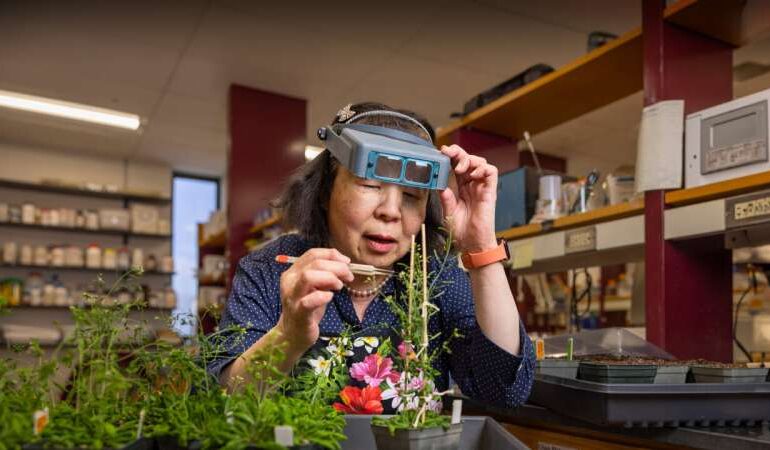Research Breakthrough Reveals Mechanism for New Crop Species

A recent study published in the journal Science has uncovered significant insights into the mechanisms of plant reproduction, potentially leading to the development of new crop species. An international team from the University of Massachusetts Amherst and Shandong Agricultural University has made strides in understanding how flowering plants distinguish between compatible and incompatible pollen, a crucial factor in agricultural innovation.
One of the key challenges in plant biology is the phenomenon of “interspecific incompatibility” (ISI), which prevents pollen from different species within the same family from fertilizing each other. This mechanism is especially relevant in the Brassicaceae family, which includes popular vegetables such as cabbages, broccoli, and kale. Understanding ISI is vital for breeding new crop types that could enhance food security by combining desirable traits from various species.
Alice Cheung, a Distinguished Professor of Biochemistry and Molecular Biology at UMass Amherst, is one of the study’s senior authors. She highlights the importance of this research, noting that while self-incompatibility systems are well understood, ISI remains “very much a black box.” The research team focused on the mechanisms that prevent pollen from broccoli from fertilizing kale, a process that hinders the creation of hybrids.
The breakthrough stems from the identification of a key protein known as SRK, which plays a crucial role in the stigma of the Brassica plant. This protein recognizes specific chemical signals from pollen grains, known as SIPS, which indicate whether the pollen is from a compatible or incompatible species. When the stigma detects incompatible pollen, it triggers a reaction that leads to the rejection of the pollen.
The research also identified the involvement of another enzyme called FERONIA. This enzyme interacts with the SIPS-SRK pair, creating a highly reactive chemical known as ROS, which effectively blocks incompatible pollen from entering the pistil. This discovery provides new insights into how plants communicate during the pollination process and lays the groundwork for future breeding strategies.
In addition to uncovering these mechanisms, Cheung and her colleagues proposed a breeding strategy that could facilitate successful crossings between distantly related species within the Brassicaceae family. This approach could accelerate the development of new crop varieties with improved traits, addressing global food security challenges.
The findings of this study mark a significant advancement in plant breeding research. As agricultural demands continue to grow, understanding the genetic and molecular basis of plant reproduction will be critical for developing resilient and diverse crop species.
For further details, refer to the original research: Yunyun Cao et al, “Pan-family pollen signals control an interspecific stigma barrier across Brassicaceae species,” published in Science on November 21, 2025.






